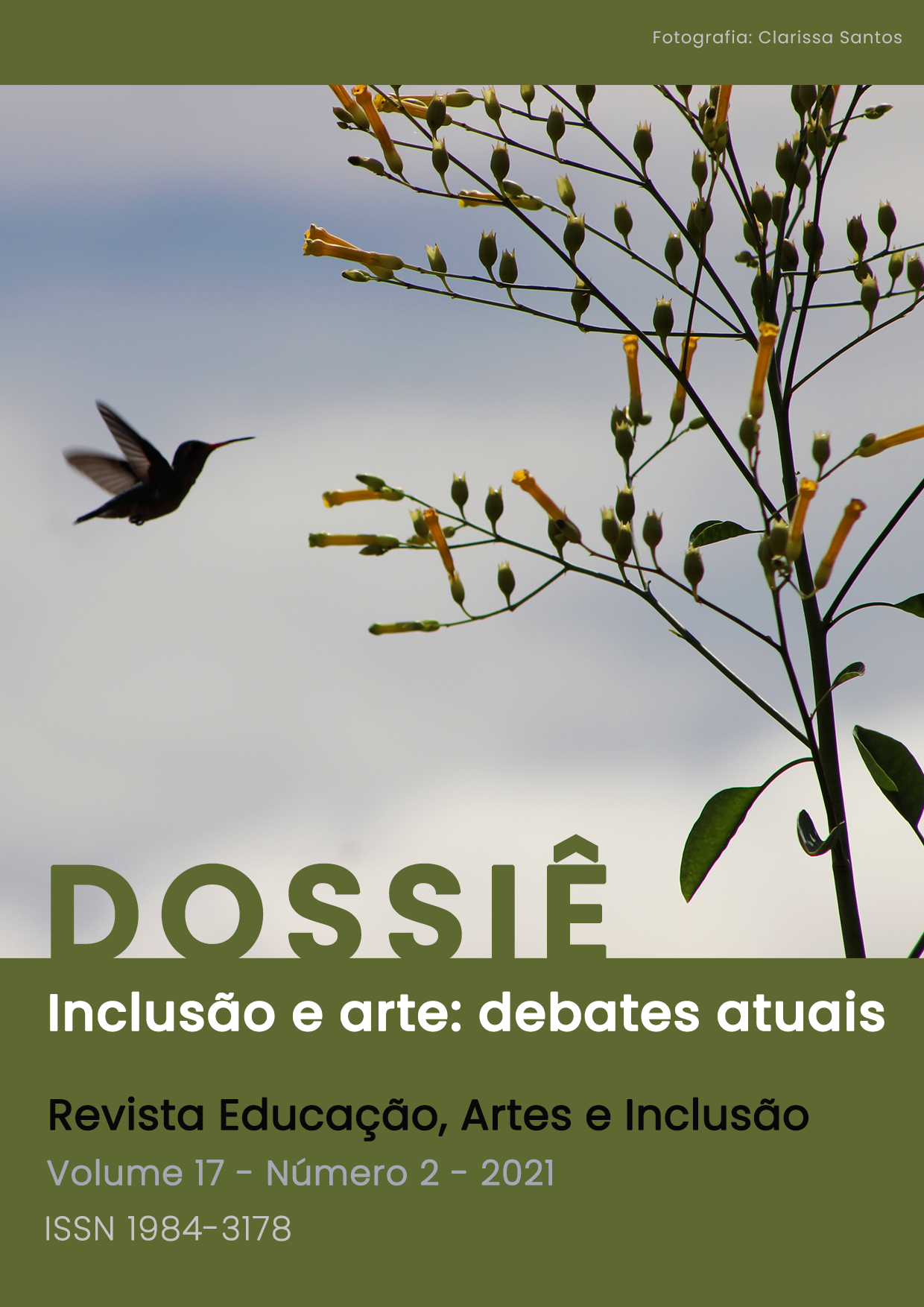The body in the art museum
DOI:
https://doi.org/10.5965/198431781722021001Keywords:
museum, corpo, aesthetics, art exhibitionsAbstract
Considering the importance of art museums and related spaces as loci for the promotion of different aesthetic experiences, we discuss how the configurations and paths of artistic exhibitions can shape the behavior of visitors' bodies of these spaces. To this end, we have chosen four artistic exhibits for analysis: exhibition “L'ultimo Caravaggio eredi and nuovi maestri” at her Scala Gallery in Milan, Italy (2018); Nathan Sawaya's “Art of the Brick” exhibition at Oca - Usp in Ibirapuera Park, São Paulo (2016); the exhibition of the fixed collection of Modern and Contemporary Art and, finally, the art workshops promoted by Tate Modern in London, England (2018). These shows express two distinct models. In the Italian and São Paulo exhibitions, the spaces are predetermined and shaped to meet the model conveyed by companies that promote artistic mega exhibitions; in them there is a quick and formatted presence of the visiting bodies. In London exhibitions, there is less rigidity in the setting, providing a greater degree of freedom and slowing the dancing of visitors' bodies in the exhibition spaces. Therefore, it is noticed that art museums and related spaces are organized from broad educational projects that include a body education of their visitors.
Downloads
References
BOURDIEU, Pierre; DARBEL, A. O amor pela arte: os museus de arte na Europa e seu público. Trad. Guilherme João de Freitas Teixeira. São Paulo: Zouk, 2003.
CANCLINI, Nestor Garcia. Culturas híbridas. São Paulo: Edusp, 2019.
FERGUSON, Bruce W. Exhibition rhetorics: material speech and utter sense. In: GREENBERG, Reesa; FERGUSON, Bruce W.; NAIRNE, Sandy (Org.). Thinking about exhibitions. Londres/ Nova Iorque: Routledge, 2005. p. 126-136.
GONÇALVES, Lisbeth Rebollo. Entre cenografias: o museu e a exposição de arte no século XX. São Paulo: Editora da Universidade de São Paulo/Fapesp: 2004.
LAMOUR, Catherine; GRANET, Daniéle. Grandes e pequenos segredos do mundo da arte. Rio de Janeiro, Tinta Negra, 2014.
LIL, Philippe Van. Catálogo da exposição The Art of the Brick: Nathan Sawaya, 2016.
MARX, Karl. Grundrisse. São Paulo/ Rio de Janeiro: Boitempo/UFRJ, 2011.
MARX, Karl. Manuscritos econômico-filosóficos. São Paulo: Boitempo, 2004.
O’DOHERTY, Brian. No interior do cubo branco: a ideologia do espaço de arte. São Paulo: Brasiliense, 2002.
Downloads
Published
How to Cite
Issue
Section
License
Copyright (c) 2021 Priscila de Souza Chisté Leite, Sandra Soares Della Fonte

This work is licensed under a Creative Commons Attribution-NonCommercial 4.0 International License.
Copyright Statement
The Educação, Artes e Inclusão is a journal that follows the Free Access Policy. The articles published by the journal are free of charge, intended for educational and non-commercial applications. The articles whose authors are identified represent the expression from the point of view of their authors and not the official position of the Educação, Artes e Inclusão Journal or the Educação, Artes e Inclusão Research Group.
Authors who publish in this journal agree to the following terms:
(A) Authors retain the copyright and grant the journal the right of first publication, with the work simultaneously licensed under the Creative Commons Attribution License which allows the sharing of the work with acknowledgment of authorship and initial publication in this magazine.
(B) Authors are authorized to take additional contracts separately, for non-exclusive distribution of the version of the work published in this journal (eg publish in institutional repository or as a book chapter), with acknowledgment of authorship and initial publication in this magazine.
(C) This journal provides public access to all of its content, as this allows for greater visibility and scope of published articles and reviews. For more information on this approach, visit the Public Knowledge Project.
This journal is licensed under a Creative Commons Attribution-NonCommercial-ShareAlike 4.0 International License. This license allows others to remix, adapt and create from your work for non-commercial purposes, and although new work must give you due credit and cannot be used for business purposes, users do not have to license such derivative works under the same terms.



